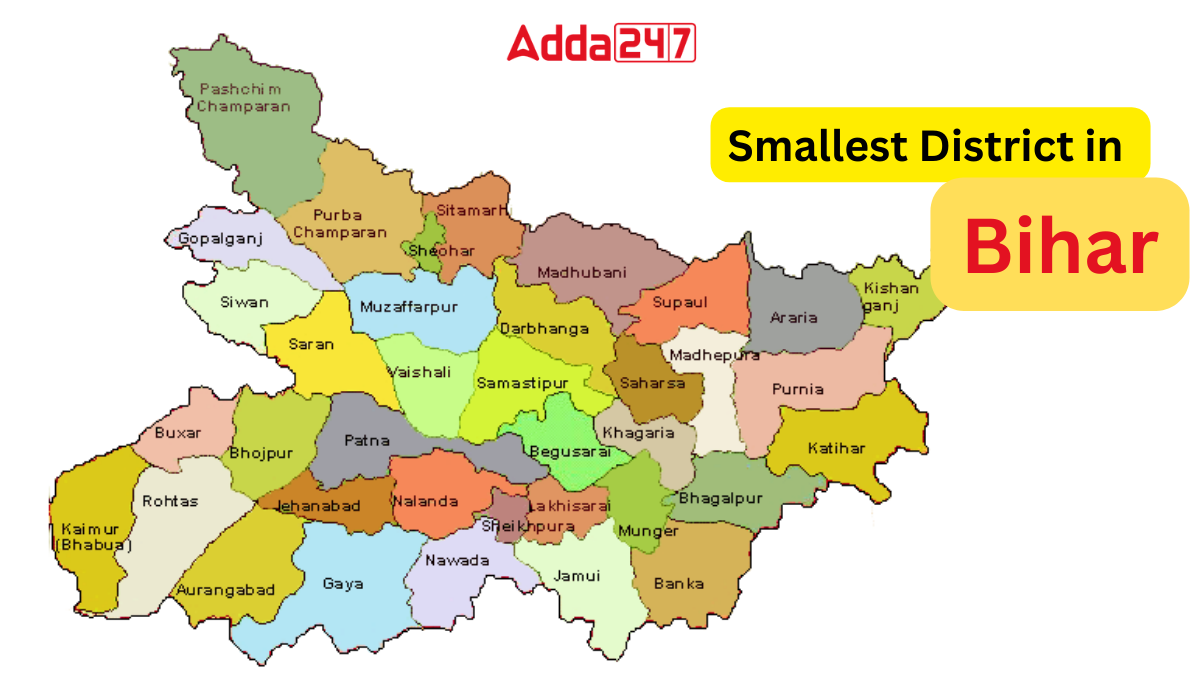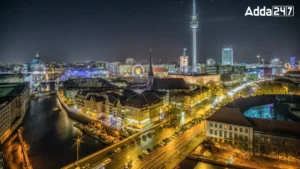Bihar, a state in eastern India, is renowned for its rich cultural heritage and historical significance. Sheohar, its smallest district, was carved out of Sitamarhi in 1994. Spanning 349 square kilometers, Sheohar is known for its lush greenery, plethora of temples, and agricultural prowess. Despite facing challenges such as frequent floods, the district embodies resilience and cultural vibrancy.
Smallest District in Bihar, Name
Sheohar, pronounced Shivahar, stands as an administrative district within the Indian state of Bihar. Known for its rich cultural heritage and historical significance, Sheohar holds a distinctive position as the smallest district in Bihar. Its inception in 1994, carved out of Sitamarhi district, marks a significant chapter in Bihar’s administrative landscape.
Sheohar District at a Glace
| Area: 349 sq. km |
| Population: 6,56,246 |
| Police Stations: 9 |
| Block: 5 |
| Villages: 207 |
| Nagar Parishad: 1 |
| Panchayat: 53 |
Smallest District of Bihar – Historical Significance
The district owes its existence to the visionary efforts of Raghunath Jha, a former Union Minister, who championed the cause of establishing Sheohar. Dr. Bhagwati Sharan Mishra, a renowned Hindi Novelist, served as the first District Magistrate, contributing to the nascent administrative framework of Sheohar.
Check: बिहार का सबसे छोटा जिला कौन सा है?
Bihar’s Smallest District – Geographical Insights
Sheohar district spans an area of 349 square kilometers, nestled amidst the verdant landscapes of Bihar. Bordered by Sitamarhi to the north and east, East Champaran to the west, and Muzaffarpur to the south, Sheohar boasts of a strategic location within the region.
Cultural Significance of Smallest District of Bihar
The name ‘Sheohar’ derives from the amalgamation of ‘Shiva’ and ‘Har’, emblematic of the district’s religious fervor and plethora of temples dedicated to Lord Shiva. Devkuli stands as a holy site, revered for its ancient Shiva temple, reflecting the spiritual ethos ingrained in Sheohar’s cultural tapestry.
Economic Landscape of Sheohar
Agriculture serves as the backbone of Sheohar’s economy, with its fertile lands fostering the growth of diverse crops. Despite its agricultural prowess, the district grapples with the challenges posed by frequent floods, attributed to the overflow of the Bagmati and Budhi Gandak rivers.
Political Dynamics of Bihar’s Smallest District
In the political arena, Sheohar maintains its significance with Chetan Anand representing the constituency in the 17th Bihar Assembly under the banner of the Rashtriya Janata Dal (RJD). The district’s political landscape continues to evolve, reflecting the aspirations and concerns of its populace.
Socio-Demographic Profile of Sheohar
Sheohar’s demographic fabric mirrors its rich diversity, with Hinduism prevailing as the predominant faith, followed by Islam. The district’s population, as per the 2011 census, stands at 656,246, with a notable growth rate over the preceding decade.
Language and Identity of Bihar’s Smallest District, Sheohar
The linguistic mosaic of Sheohar encompasses a blend of Hindi, Urdu, and various dialects, with Bajjika holding sway as the primary language. The region’s linguistic plurality underscores its cultural vibrancy and historical heritage.
Notable Personalities of Sheohar
Sheohar boasts a lineage of distinguished personalities, including Thakur Jugal Kishore Sinha, Ram Dulari Sinha, Raghunath Jha, Hari Kishore Singh, Anwarul Haque, Sitaram Singh, and Rama Devi, each leaving an indelible mark on the district’s socio-political landscape.
Bihar State at a Glance
- Country: India
- Establishment: 22 March 1912
- Statehood: 26 January 1950
- Capital and Largest City: Patna
- Districts: 38
- Government: Bihar Government
- Governor: Rajendra Arlekar
- Chief Minister: Nitish Kumar
- Deputy Chief Minister: Samrat Chaudhary Vijay Kumar Sinha
- Parliamentary Representation: Rajya Sabha (16 seats), Lok Sabha (40 seats)
- Total Area: 94,163 km2 (36,357 sq mi) (12th in India)
- Population (2011): 104,099,452 (3rd in India)
- Official Language: English
- Literacy Rate (2011): 63.82%
- Gender Ratio (2011): 918 males per 1000 females




 Which Glacier is the Source of the Brahm...
Which Glacier is the Source of the Brahm...
 Which City of Germany is Known as the Gr...
Which City of Germany is Known as the Gr...
 Which Peak is Known as the Five Treasure...
Which Peak is Known as the Five Treasure...







